A functional organizational chart is a visual representation of an organization's internal structure, depicting roles, responsibilities, and hierarchical relationships. It offers flexibility, efficiency, and all-in-one visualization, making it crucial for successful organizations. Additionally, functional organizational charts hold academic importance, aiding students in understanding organizational structures and management practices. This article will explore the importance of functional organizational charts, provide guidance on how to read them and teach you how to create one for your organization.
Contents of this article
Part 1. What is a Functional Organizational Chart?
A functional org chart serves as a visual representation of an organization's internal structure, outlining the key roles, responsibilities, and hierarchical relationships between individuals or departments. It provides clarity by presenting a clear and systematic framework that aids in comprehending the overall organizational setup.
Part 2. The Importance of Functional Organizational Chart
Functional organizational charts offer several benefits that contribute to the success of an organization. From flexibility to academic importance, the significance of a functional organizational chart is paramount.
- Flexibility
Functional organizational charts foster flexibility within an organization by identifying the primary functions and various departments. This enables individuals to adapt and respond effectively to changes within their respective roles, ensuring a smooth transition in times of reorganization or shift in operational requirements.
- Efficiency
Efficiency is a vital component of any successful organization. A functional organizational structure diagram plays a pivotal role in enhancing efficiency by streamlining communication channels, fostering collaboration, and optimizing resource allocation. Employees can easily identify their roles and responsibilities, minimizing confusion and promoting productivity.
- All-in-one Visualization
One of the key advantages of functional organizational charts lies in their ability to provide a comprehensive overview of an organization's structure. By presenting information in a visually appealing manner, these charts allow stakeholders to grasp the interdependencies between departments, the reporting lines, and the overall hierarchy. This all-in-one visualization aids in decision-making processes and facilitates effective communication.
- Academic Importance
Functional organizational charts hold immense significance in academic settings. They allow students to gain a deeper understanding of organizational structures and management practices. By analyzing and interpreting a functional org chart, students explore the intricacies of real-world organizations, preparing them for future professional endeavors. Additionally, studying these charts enables a holistic comprehension of an organization's dynamics, fostering critical thinking skills.
Part 3. How to Read a Functional Organizational Chart
To effectively decode a functional organizational chart, it is crucial to follow a systematic approach. The following steps provide a simplified method:
- Identify Key Roles:Begin by identifying the prominent roles or departments represented in the chart. Understand their significance and purpose within the organization.
- Hierarchical Relationships:Analyze the hierarchical structure depicted in the chart. Observe the reporting lines and identify the chain of command, discerning who reports to whom.
- Interdepartmental Connections:Explore the interdependencies between various departments and how they collaborate. Identify functional relationships that enable streamlined operations.
- Role Descriptions:Pay attention to the responsibilities outlined for each role or department. These descriptions provide insight into the functions and expertise required for the respective positions.
- Supporting Information:Seek additional information that complements the functional structure chart, such as job descriptions, policies, or procedures, to gain a more comprehensive understanding.
Part 4. The Functional Organizational Chart
The following examples showcase different variations of functional organizational charts and structures. From traditional hierarchical structures to more collaborative and cross-functional approaches, these examples highlight the various ways in which departments and teams can be organized based on specific functions or activities.
Example 1: Functional Organizational Chart
The functional org chart is a traditional hierarchical structure where departments are grouped based on specific functions or activities. Each department is headed by a manager who oversees a team of individuals responsible for carrying out the tasks related to their respective functions.

Example 2: Functional Organizational Structure
Unlike the traditional approach, the functional organizational structure emphasizes a more collaborative and cross-functional approach to organizing departments and teams. In this structure, the emphasis is on interdepartmental coordination and communication. Each department or team consists of individuals from various functions, encouraging a multidisciplinary approach to problem-solving.
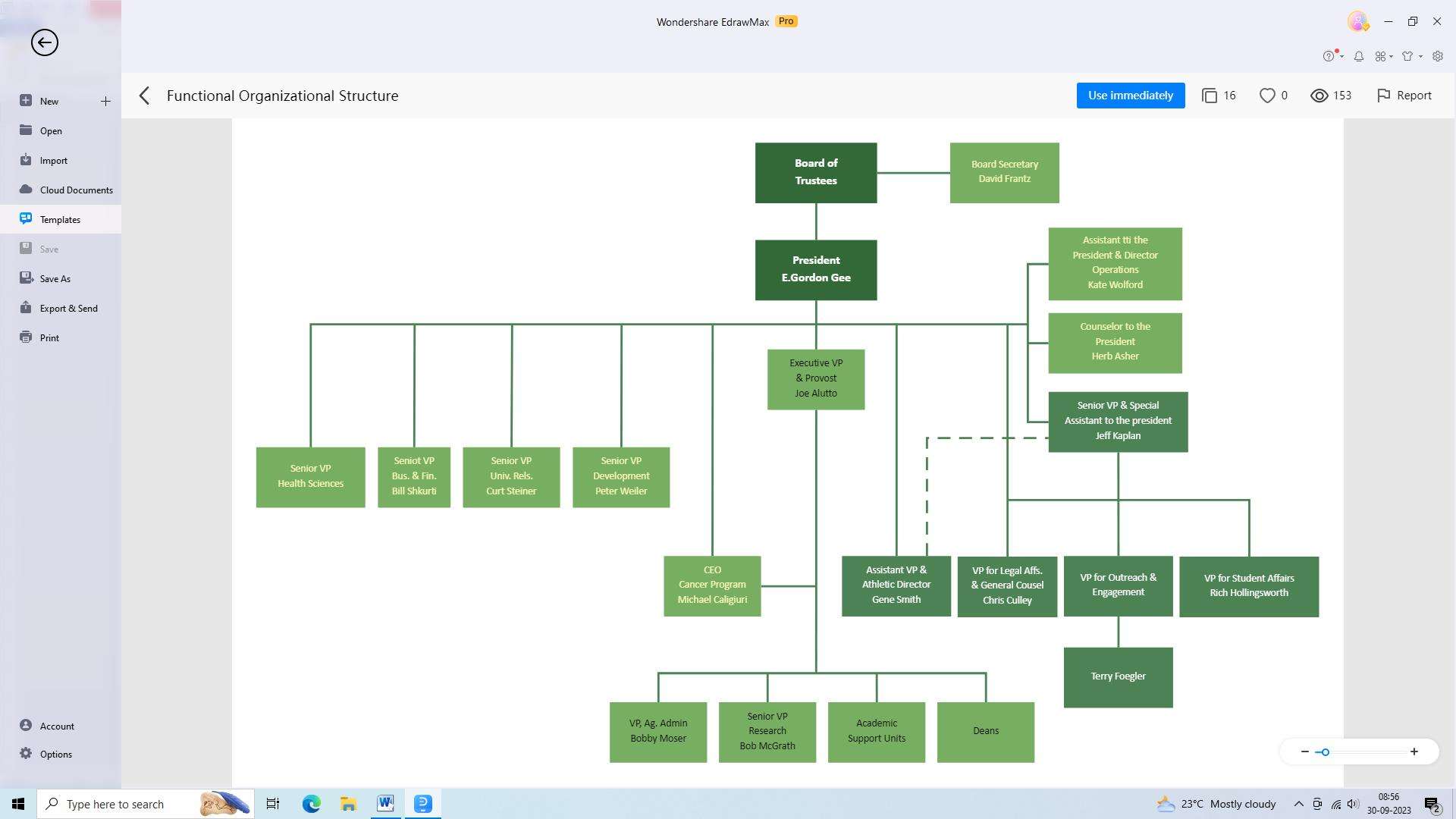
Example 3: Functional Management Organizational Chart
The functional management organizational chart highlights the role of managers in the organizational structure. It illustrates how managers at different levels oversee the activities of their subordinates and ensure effective coordination between various functions. This type of chart is particularly useful for depicting the reporting relationships and lines of authority within an organization.
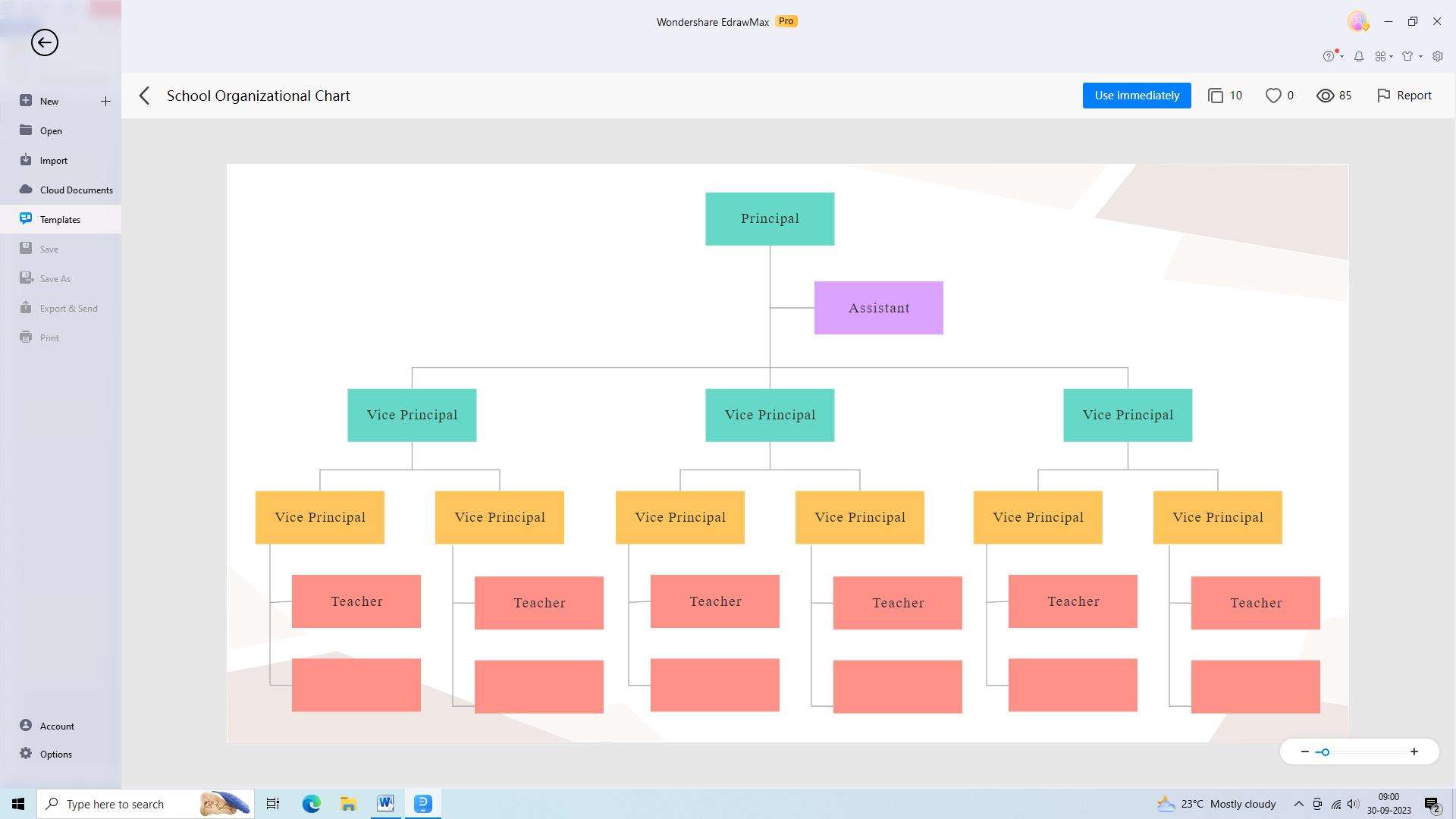
Example 4: Basic Functional Organizational Charts
Basic functional organizational charts are simpler and less detailed than the previous examples. These charts provide a foundational understanding of the overall organizational structure without delving into the intricacies of each department or function. They offer a high-level overview of how different functional areas are connected within the organization.
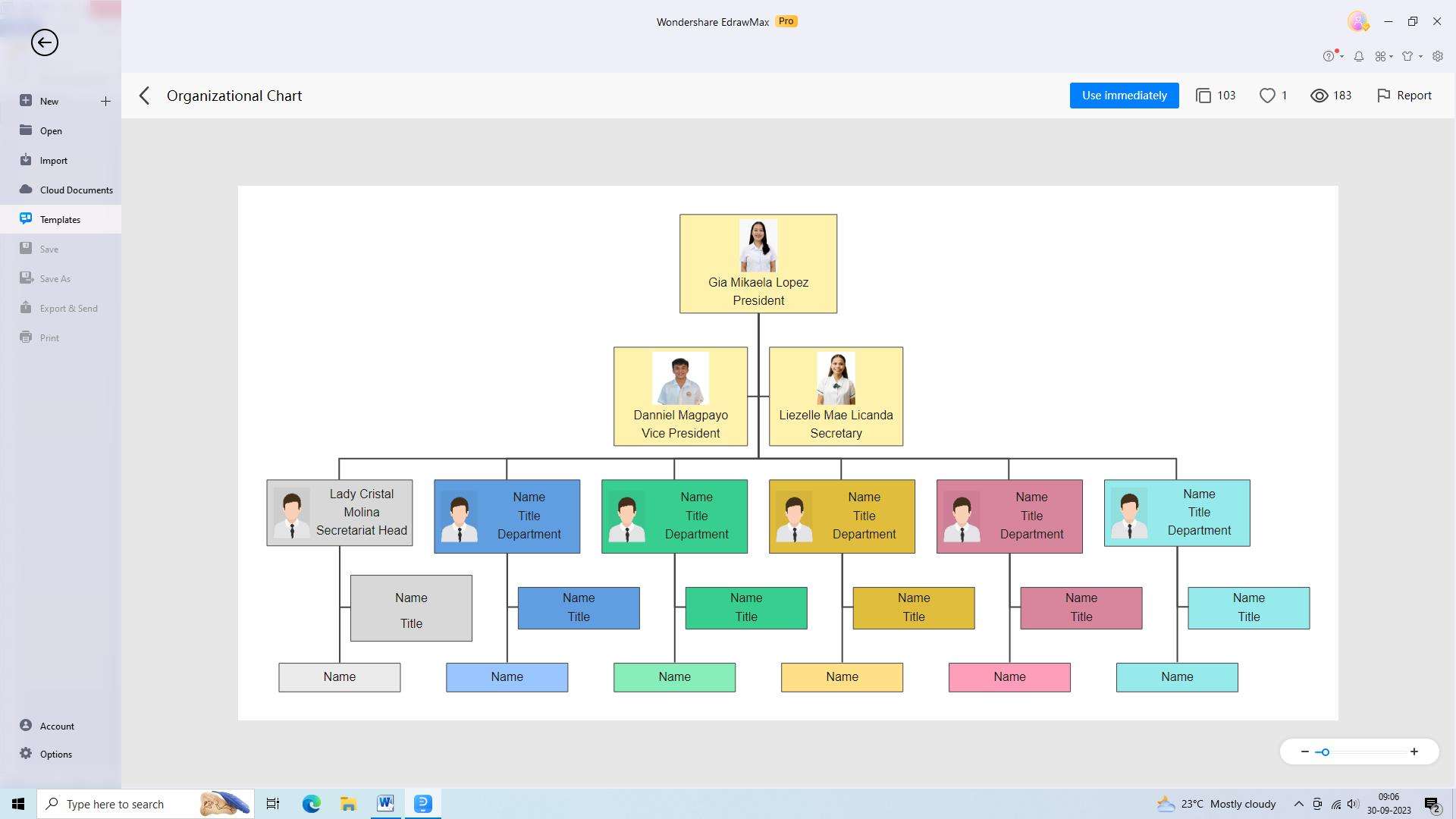
Part 5. How to Create a Functional Org Chart Easier with Edrawmax?
If you want to create an exceptional functional organizational chart, you should definitely consider using Wondershare EdrawMax. The tool lets users create organizational charts of the highest standard, and you will be delighted with the features and templates this tool offers. For your assistance, here are the steps to create a functional organizational structure diagram using the tool:
Step 1: Open EdrawMax
Launch the EdrawMax software on your computer. If you don't have it installed, you can download and install it from the official website.
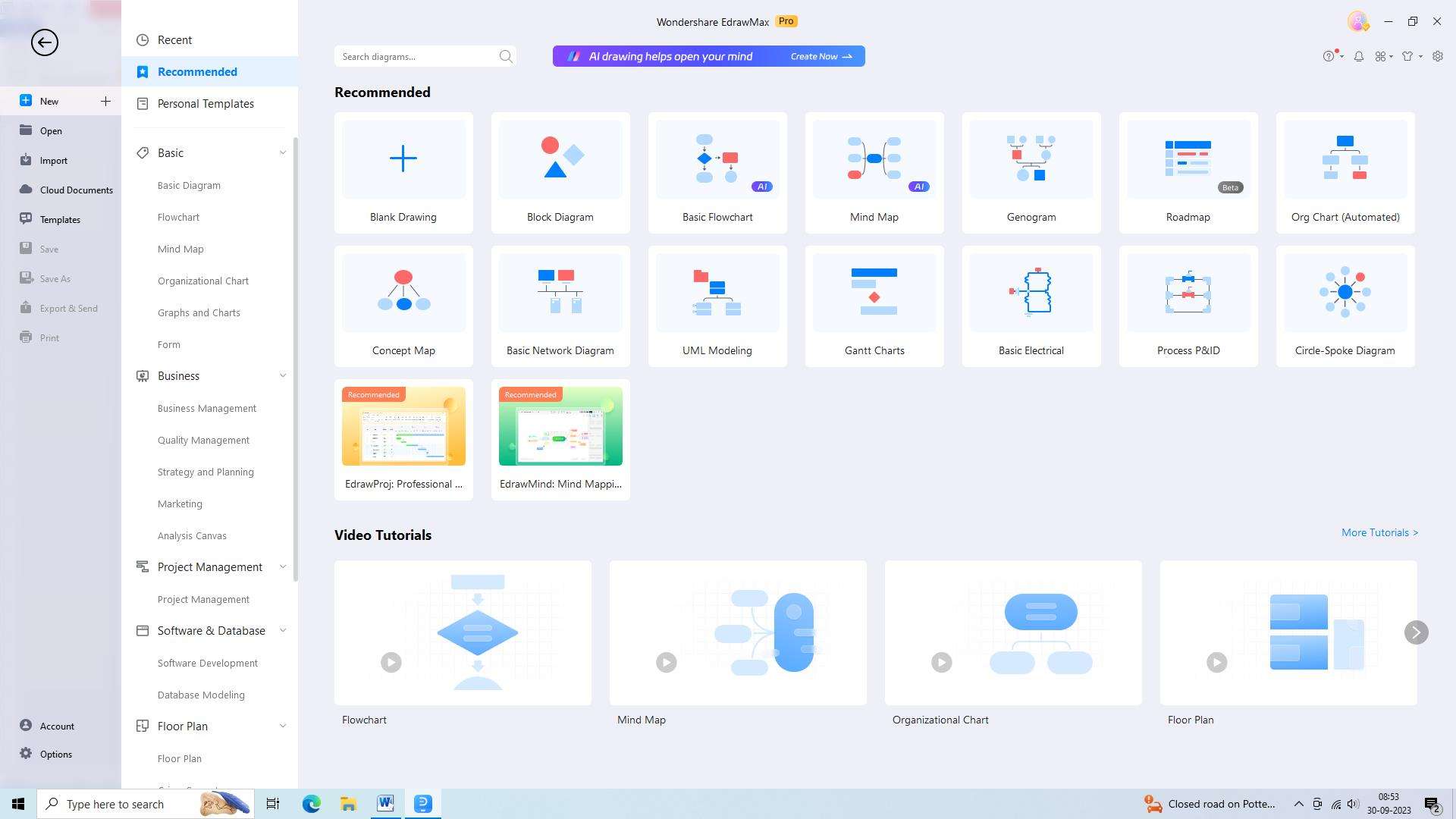
Step 2: Select the template
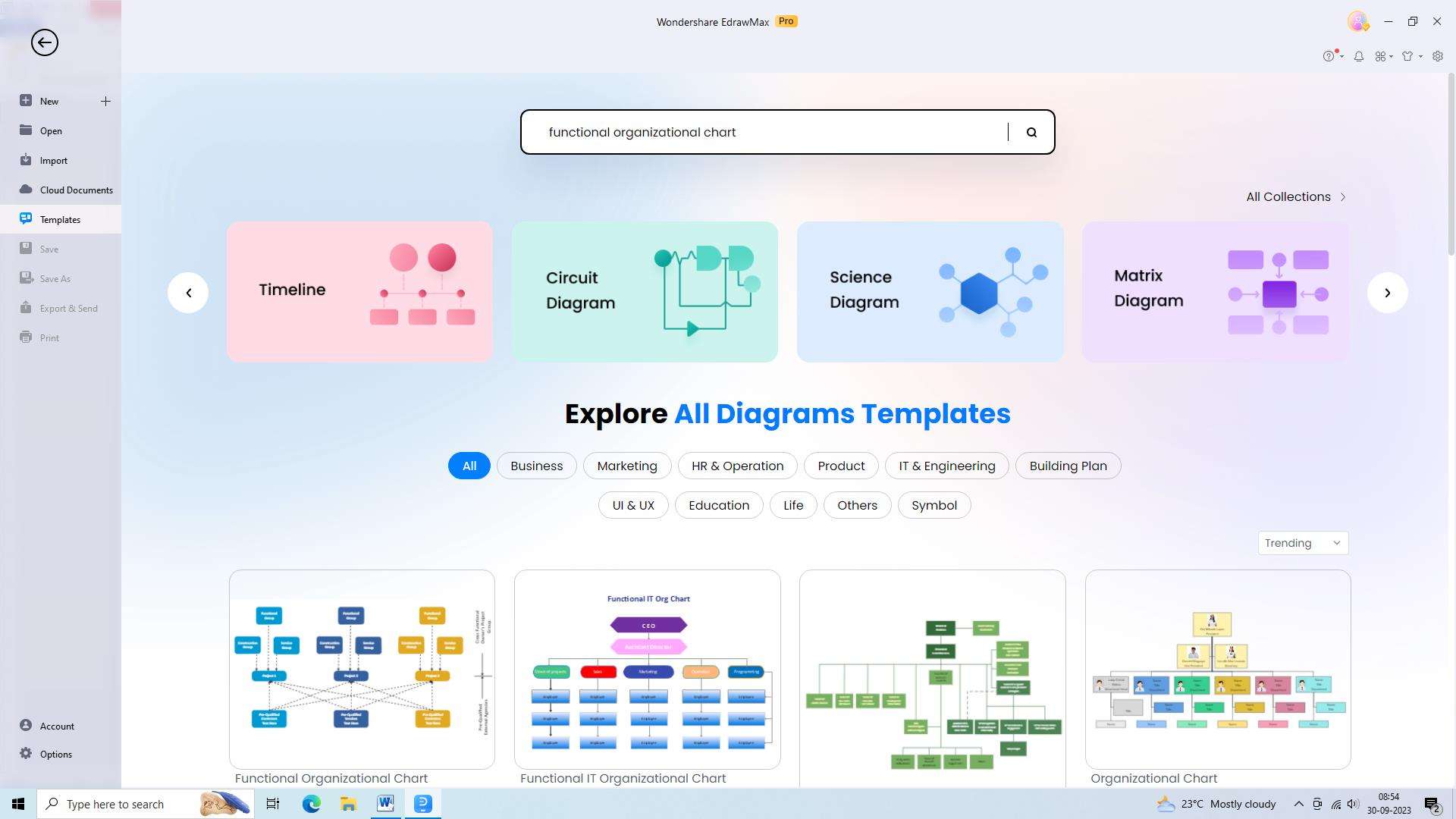
Once EdrawMax is open, click on the "Organizational Chart" category on the left-hand side of the screen. This will display a range of pre-designed templates for organizational charts. Choose a template that closely matches the structure and hierarchy of your organization.
Step 3: Customize the chart
Customize the functional organizational chart by using shapes and lines in EdrawMax to represent different roles and positions. Add text to label each position and include job titles, responsibilities, and reporting lines.
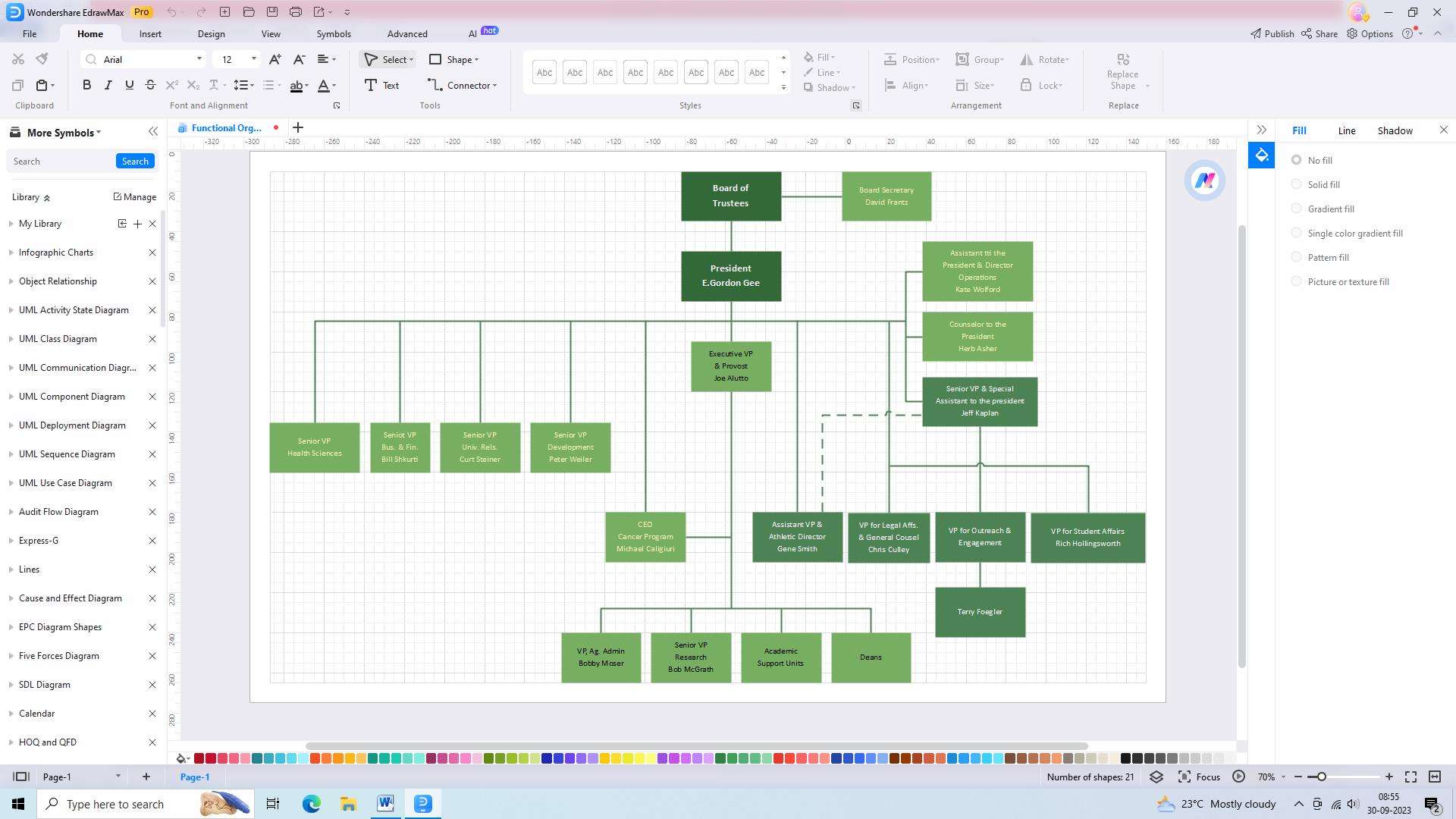
Step 4: Save and export the chart
Save your customized organizational chart by clicking on "File" and selecting "Save". Export the chart in formats like PDF, PNG, or JPEG by choosing "Export" in the "File" menu.
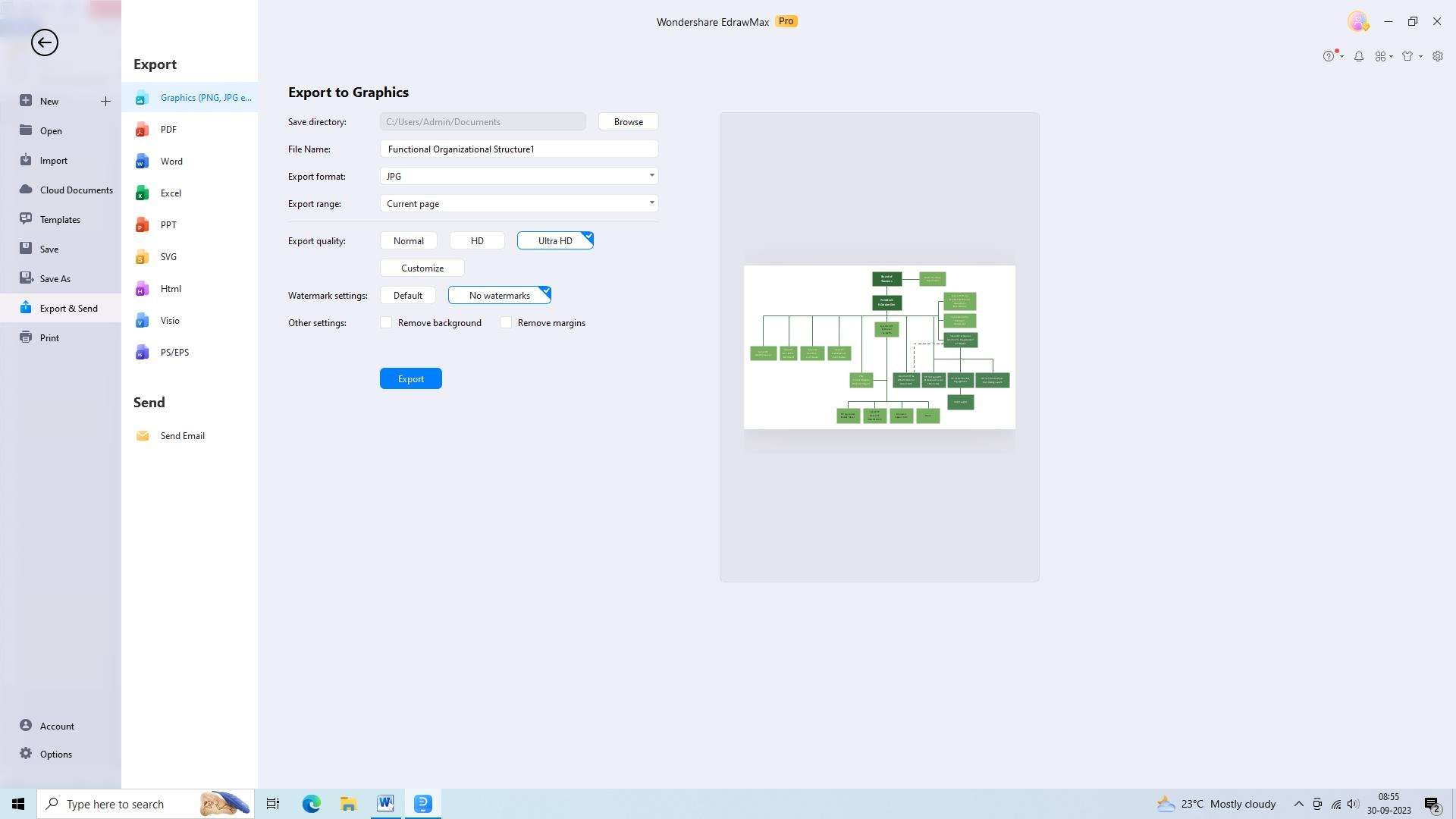
Final Thoughts
Functional organizational charts are invaluable tools for understanding an organization's structure and fostering efficiency and collaboration. They provide a comprehensive overview of roles, responsibilities, and hierarchical relationships, aiding decision-making and effective communication. A functional org chart also has academic significance, helping students gain insights into real-world organizations and preparing them for future professional endeavors.




